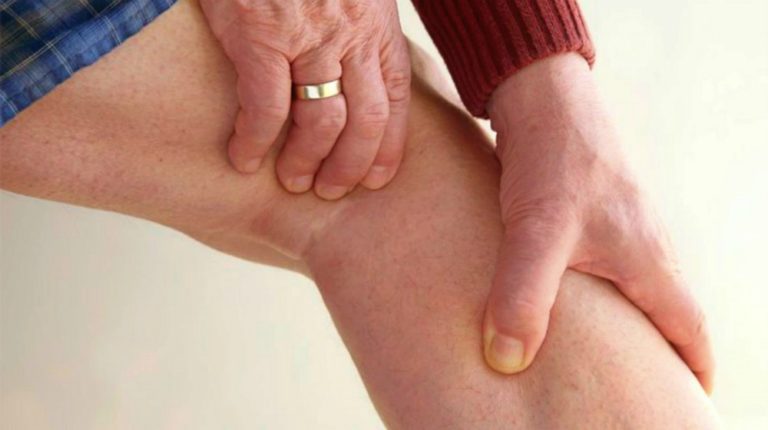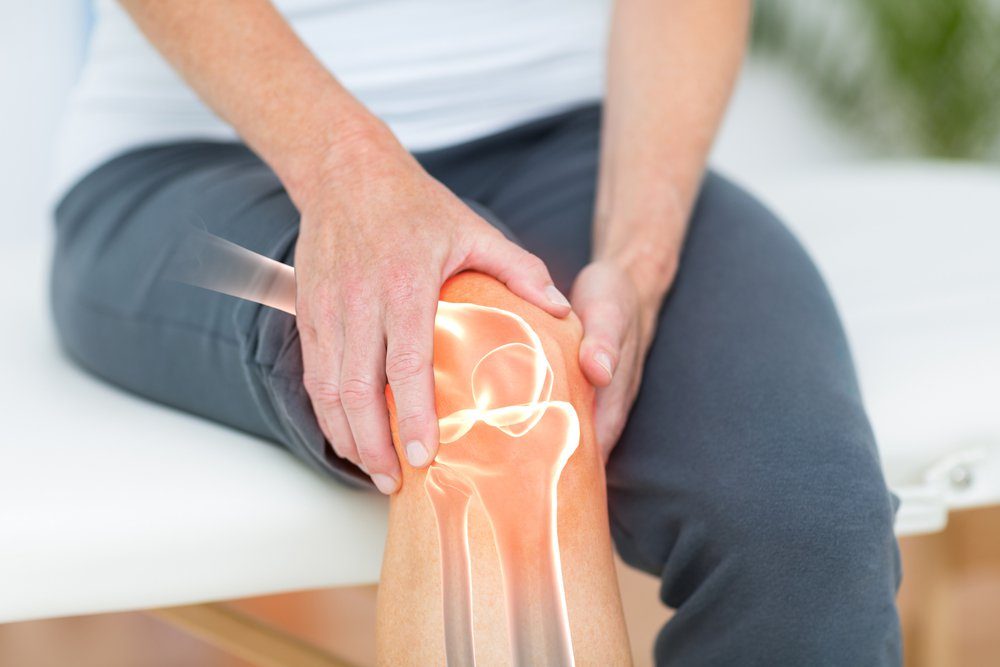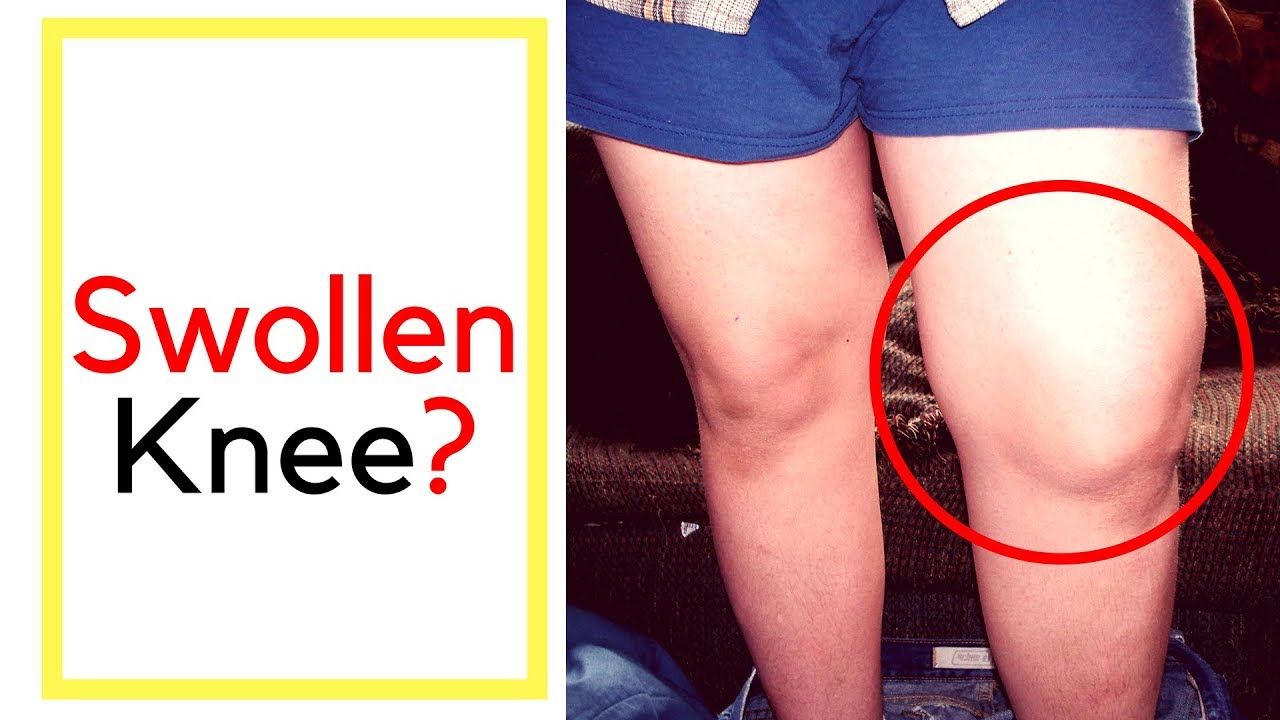Pain Behind Knee: Signs Sauses And Treatment
If youâve experienced pain behind your knee before, you probably know how uncomfortable mobility can become.
The knee is a sensitive joint that needs a lot of care. If you are an athlete or love walking with your legs, you should take this advice to the bank.
Now, pain behind your knee could be an indicator of several things. That is why I always advocate for a thorough medical diagnosis beforehand. At least that way, youâll get laser-accurate information pinpointing the actual problem.
Until then, you must take extra measures to avoid any additional trauma or heavy impacts on your knee.
Today, I want us to look at the many possible conditions that could be the reason behind your aching knee. Further along, Iâll share some nuggets on basic treatment for general knee pains.
Letâs dive right into it.
Harvard Medical Schools Findings Surrounding The Phenomena Of Continued Pain Following Total Knee Replacement
Here are some more quick facts surrounding the phenomena of continued pain following total knee replacement from researchers at Brigham and Womens Hospital, Harvard Medical School.
In this 2017 study published in the medical journal Osteoarthritis Cartilage, the doctors found:
- Approximately 20% of total knee replacement recipients have suboptimal pain relief. .
- Pre-operative widespread pain was associated with greater pain at 12-months and failure to reach a clinically meaningful difference in pain, pre and post replacement
- Patients with widespread pain along with the pain catastrophizing problems may help identify persons with suboptimal total knee replacement outcomes.
Muscle And Tendon Conditions
The shallow depression formed at the back of the knee is called the popliteal fossa; it is formed at the junction of the femur and tibia. There is a muscle here on the floor of the popliteal fossa which is the deepest muscle of the knee joint. It works on the femur to rotate it on the tibia when walking. Through the popliteal depression a bundle of muscles run from the pelvis to the knee and attach to the tibia and fibula respectively by tendons. These three muscles are collectively called the hamstring muscles, and function to extend the leg and bend the knee.
At the back of the lower leg the calf muscles are composed of the gastrocnemius and soleus muscles which flex the leg at the knee and flex the ankle via the achilles tendon.
Read Also: Why Do My Knees Crack When I Squat
Best Long Term Strategy
Where Does Untreated Pain Behind The Knee Lead To

Just like any form of injury or health condition, regardless of the cause, untreated pain behind the knee can lead to great discomfort, limited movement, and a negative impact on your daily routine.
Complications also arise when you dont treat pain behind the knee.;If the cause of the pain is a torn meniscus, it can lead to having weak bones that may develop to arthritis over time.
You May Like: Why Do My Knees Crack When I Squat
Pain Behind Knee By Bakers Cyst
Bakers cyst, also called popliteal cyst, is a type of cyst with synovial fluid inside located on the back of the knee and is usually related to other diseases such as: arthritis, injury to the meniscus or cartilage wear. so it does not need treatment, disappearing when the causative disease is controlled. Most commonly, it is located between the medial gastronomic and the semi-membranous tendon. Symptoms include pain behind the knee, as well as some limitation when bending the knee and localized swelling, forming a sore, mobile lump that can be felt.
What to do;: Not all cases need treatment, but if the individual has symptoms, the doctor may order several sessions of physical therapy to relieve symptoms.;Likewise, in case of a lot of pain it could be indicated to aspirate the fluid that contains the cyst.
Also Read;: Marie Antoinette Syndrome: Truth And Its Observations
F Get The Right Footgear
Often not taken seriously, you must buy footwear that gives your feet comfort during movement. That means acquiring insoles that provide conducive support to your knees, heel, and foot arch.
This shouldnât bother you much now as there are many shops offering gait analysis. The best part is that many shops do it for free!
Gait analysis helps assess your full process of walking and running. Through that same test, youâll also know whether you have any hidden biomechanical abnormality.
After the whole procedure ends, the shoe store now can help you pick a shoe befitting your natural gait and movement.
You May Like: Does Meniscus Surgery Lead To Knee Replacement
When To Contact A Medical Professional
- You cannot bear weight on your knee.
- You have severe pain, even when not bearing weight.
- Your knee buckles, clicks, or locks.
- Your knee is deformed or misshapen.
- You cannot flex your knee or have trouble straightening it all the way out.
- You have a fever, redness or warmth around the knee, or a lot of swelling.
- You have pain, swelling, numbness, tingling, or bluish discoloration in the calf below the sore knee.
- You still have pain after 3 days of home treatment.;
How To Treat Pain Behind The Knee
For the;treatment of pain behind the knee,;the cause of this condition must first be determined.;Your doctor will listen to your complaints and do your examination.
One of the;following;imaging methods can be;used;to detect pathology in the knee, behind the knee and around the knee;:
- X-ray
- magnetic resonance imaging
- ultrasound
After determining the underlying cause,;treatment steps;will be started;for the cause;.;To treat pain behind the knee, treatment steps for the underlying cause include:
| leg cramps | If you experience frequent leg cramps, you can get relief by stretching your leg muscles regularly.;You should avoid sudden muscle movements.;
You can ask your doctor for exercise recommendations to strengthen the knee and surrounding muscles. |
| Baker coffin | Its usually not a cause for concern.;The size of the cyst can be checked with intermittent examinations.;
Bakers cysts that grow too large can cause back knee pain.;In this case, medical treatment options or surgical removal of the cyst may be considered. |
| Hamstring injury |
Read Also: Why Do My Knees Look Dark
Massage Or Physical Therapy
Having a massage may also help reduce physical pain and stress. Applying gentle pressure around the affected area may help relieve tension, and a full body massage can help the muscles relax.
Deep tissue massages may not be a good idea because the extra pressure may make the symptoms worse.
Physical therapy, using a combination of exercise, massage, and gentle stretches, can help relieve symptoms.
What Other Symptoms Might Occur With Behind Knee Pain
Behind knee pain often occurs along with other symptoms that vary depending on the underlying disease, disorder or condition. These symptoms include swelling or , inflammation and redness, soreness, or . If you are experiencing other symptoms along with your behind knee pain, be sure to tell your health care provider. This additional information can help your doctor make a diagnosis.
Recommended Reading: Do Copper Braces Work
Youre Trying To Relax
When your body is at rest, you may notice the mild to moderate pains that you could more easily ignore when your mind was preoccupied with busy thoughts during your waking hours.Additionally, when you sleep, your body produces less cortisol. While high cortisol levels can lead to heart disease, healthier levels can help your body reduce inflammation.
Since most joint pains are caused by or worsened by inflammation, moderate amounts of cortisol can help your body manage this inflammation. But when your body is relaxed, such as when youre trying to go to sleep, your body has less cortisol to mitigate the swelling and irritation in your knees.
Torn Anterior Cruciate Ligament

You hear a pop and can’t move after you suddenly change direction — often while playing soccer, football, or basketball. You may have torn your ACL, which connects the femur and the tibia and prevents the tibia from moving too far forward. Your knee will hurt and swell and feel unstable.
You can tear or strain any of the tissues that hold your knee together: Ligaments connect bones to each other; tendons connect muscle to bone. Irritated tendons from using them too much? That’s tendinitis.
Don’t Miss: Flying After Knee Replacement Surgery
How Do You Treat Nerve Pain In The Knee
The Centeno-Schultz Clinics board-certified physicians are experts in the diagnosis of both spinal disorders and musculoskeletal and orthopedic disorders. We provide a full 60-minute new patient consultation with thorough physical examination, neurological examination, musculoskeletal ultrasound of the nerves, the knee joints, the meniscus, and stabilizing ligaments. Initial treatment may include physical therapy, activity modification, and knee bracing. Additionally, medications and injections may be recommended. More definitive treatment would be using your own blood with platelet-rich plasma to help improve the function of the nerves from the lumbar spine, pelvis, and the knee in addition to platelet-rich plasma or bone marrow concentrate, which includes cells and platelet growth factors to improve the knee arthritis and instability.
How Is A Knee Bone Spur Diagnosed
After reviewing your symptoms, a doctor will want to discuss any medical conditions or injuries you have experienced in diagnosing you with a bone spur. The next step will be to inspect the knee and leg for any signs of injury. Bending, extending, and rotating the knee will allow the doctor to determine your range of motion and level of pain.
Diagnostic imaging includes bone spurs in knee x-rays. They can show bone abnormalities, including degeneration and fractures. Below is a list of other diagnostic tests.
- Magnetic resonance imaging : This can produce a 3D image of bones and soft tissue. It includes cartilage, muscle, and tendon damage in detail, as well as bone spurs.
- Computerized tomography : A CT scan is a series of X-ray images from various angles that are then merged together to form a cross-sectional view of bones and soft tissues.
- Electromyography : The EMG shows electrical activity in the muscle during rest, as well as muscle contraction. This is usually performed if the doctor suspects muscle or nerve damage.
- Nerve conduction velocity : This shows the speed of electrical signals moving through the affected nerve. Slow speed can indicate nerve damage.
You May Like: Knee Pain When Lying Down
How Do People Over 50 Typically Get Knee Meniscus Tears
There are two types of causes for meniscus tears, especially in individuals 50 and up.
The first is an acute injury, meaning something suddenly caused the meniscus to tear, strain, or stress. This can include stepping out of the car wrong, landing in a strange position, or taking a fall.
The other cause of meniscus tears occurs through chronic injuries, such as arthritis. Arthritis causes wear and tear on the joints, causing the connective tissue to slowly wear out.
When this happens, many individuals start to complain that they are unable to move their knees through a full range of motion and often experience pain when bending over or squatting down.
Discomfort Aching And Tightness In The Knee Grating And Pain Behind The Kneecap When Bending The Knee Or When It Is Exercised After A Period Of Rest
May be due to chondromalacia patella. In this condition the cartilage on the underside of the patella softens and deteriorates. Some people are able to ignore the condition, but it will not improve and will probably need surgery. Sometimes an unstable flap of surface cartilage may cause this pain, and may be curable with simple keyhole surgery and a chondroplasty.
Recommended Reading: Ways To Pop Your Knee
Revolutionary Medical Treatments At The Centeno
Knee nerve pain can be debilitating and require a multitude of medications, surgical procedures and high-dose corticosteroids like cortisone that can lead to other problems. The board-certified physicians at Centeno-Schultz Clinic have revolutionary treatments validated in peer-reviewed literature to improve the function of the nerve and decrease nerve pain .
Using your own blood, platelet-rich plasma, the board-certified physicians at the Centeno-Schultz Clinic are able to inject and hydrodissect around all areas of nerve impingement, leading to your pain. This can include the lumbar nerve roots with an x-ray guided platelet epidural, the SI joint, the sciatic nerve in the pelvis, the sciatic nerve in the thigh, the tibial nerve, or the common peroneal nerve behind the knee. Hydrodissection is an ultrasound-guided injection with extremely small needles to create space around the peripheral nerves in the leg from the tight fascia, muscles, bones, or ligaments that are compressing and irritating the nerve. In addition, the platelets from your own blood improve the function of the nerve.
Pain Behind The Knee When Bending It Or Pain And Stiffness Below The Kneecap
Although not behind the knee, the patellar tendon can be overloaded and torn by repetitive actions such as jumping, running or kicking. This is called patellar tendonitis, and can get progressively worse as the the torn tendon swells and becomes weaker. Again the RICE formula should be applied, and your doctor should be consulted.
Also Check: How Soon Can I Shower After Knee Replacement Surgery
Exercises To Reduce Knee Pain
Knee pain is one of the most common orthopedic conditions for which people seek medical treatment. It includes pain felt behind and around the knee cap, especially during activities like stair climbing, squatting, running, and walking while carrying a heavy load. Knee pain can prevent you from participating in your favorite activities and performing daily tasks. Without proper treatment, it can linger for years.
Knee pain can be caused by a variety of factors, some of which include knee stiffness, incorrect positioning of the knee cap at rest or with movement, flat feet, improper exercise form, and weakness of the muscles that control the hip and knee.
A physical therapist can work with you to address your knee pain. After an evaluation, a physical therapist will design an individualized comprehensive treatment program to address the specific factors causing your knee pain. You can contact a physical therapist directly for an evaluation.
To find a physical therapist in your area, visit;Find a PT.
These exercises are proven by research to reduce pain and improve your ability to participate in the activities you love.
Consult your health care provider before starting these exercises to determine if they are right for you. If you experience any symptoms such as pain, shortness of breath, or dizziness at any time, you should stop immediately. These exercises are provided for educational information only.;
Basics Of Torn Meniscus

A torn meniscus is a tear in the cartilage of the knee. ;The meniscus functions to improve the fit between the femur and the tibia, to absorb shock and distribute load in the knee, and to help move lubricating fluid around the knee. ;The meniscus can tear from either trauma or injury or from degeneration.
The knee is made up of the femur , the tibia , and the patella . ;Ligaments hold the bones of the knee together and the patella lies in the quadriceps muscle in front of the knee.
Between the femur and the tibia are two pads, one on the medial side of the knee and one on the lateral side of the knee. Each of these pads is called a meniscus. See Figures 1 and 2.
The meniscus is made of fibrocartilage, which gives it a rubbery texture. Within the meniscus there are also fibers of collagen that help maintain the shape of the meniscus. The meniscus has blood supply only at its outer attachments. Therefore, about 4/5 of a meniscus has no blood supply and therefore cannot heal if it is torn.
Don’t Miss: How To Remove Scar Tissue From Knee Surgery
Complementary And Alternative Therapies
A number of mind-body therapies, such as acupuncture and tai chi, may be used to treat knee pain, especially knee osteoarthritis.
While once popular, the dietary supplements glucosamine and chondroitin have fallen out of favor for treating knee osteoarthritis. This is due to their lack of benefit based on scientific studies; although, some people may obtain mild relief. Like any medication, vitamin, or supplement, be sure to talk with your doctor first before taking it to be certain it is safe for you.
Why Does It Appear And How To Treat It
Nerve pain in the knee can be very irritating and life-altering during normal activities as well as leisurely pursuits. Nerve pain in the knee can radiate from the lumbar spine, the pelvis, or the small nerves in the knee. It also can begin after surgery from surgical nerve irritation from the incision, or can be the type of pain related to knee arthritis. At the Centeno-Schultz Clinic, we are experts in spine, pain management, and non-surgical orthopedics. We perform a thorough physical examination and musculoskeletal ultrasound of your knee to identify the root cause of your pain and how to treat it appropriately.
Recommended Reading: How To Prevent Knee Pain In Old Age